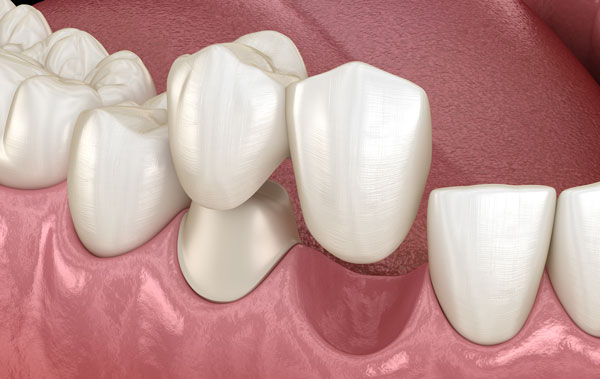Types of dental bridges
There are different types of bridges available which include traditional bridges, Maryland bridges, cantilever bridges, and implant-supported bridges. These bridge types offer patients a variety of options, depending on their specific condition.
Traditional dental bridge
This is the most common type of dental bridge. It consists of dental crowns on both ends with artificial teeth in between. A dentist bonds the crowns to your natural teeth on either side of the gap, and the artificial teeth fill in the space between. We at Tea Tree Dental prefer to use traditional dental bridges when you have healthy natural teeth on both sides of the gap.
Maryland dental bridge
A Maryland bridge, or resin-bonded bridge, uses metal wings instead of crowns to secure your bridge. A dentist bonds the wings to the backs of your adjacent teeth to hold your bridge in place. Dentists typically use Maryland bridges to replace front teeth because this application isn’t strong enough to withstand the chewing forces back teeth endure.
Cantilever dental bridge
A cantilever bridge is similar to a traditional bridge, but there’s only a crown on one end, not both. When your dentist bonds the bridge onto your supporting tooth, the artificial tooth extends across the gap, filling it. We use cantilever bridges when you only have natural teeth on one side of the gap. Unfortunately, due to their design, cantilever bridges aren’t as strong as traditional bridges.
Implant-supported bridge
An implant-supported bridge is similar to a traditional bridge, but it rests atop dental implants instead of natural teeth. Dental implants are small threaded posts that replace missing teeth roots. Before attaching a bridge to dental implants, your implants must fully integrate (fuse) with your jawbone. This process takes three to six months on average, but it can take longer depending on your situation. Dentists can use implant-supported bridges when you have three or more missing teeth in a row.
Although there are variances between the dental bridges, they are generally strong and reliable. When produced correctly, they can match the feel and appearance of the natural teeth closely.







